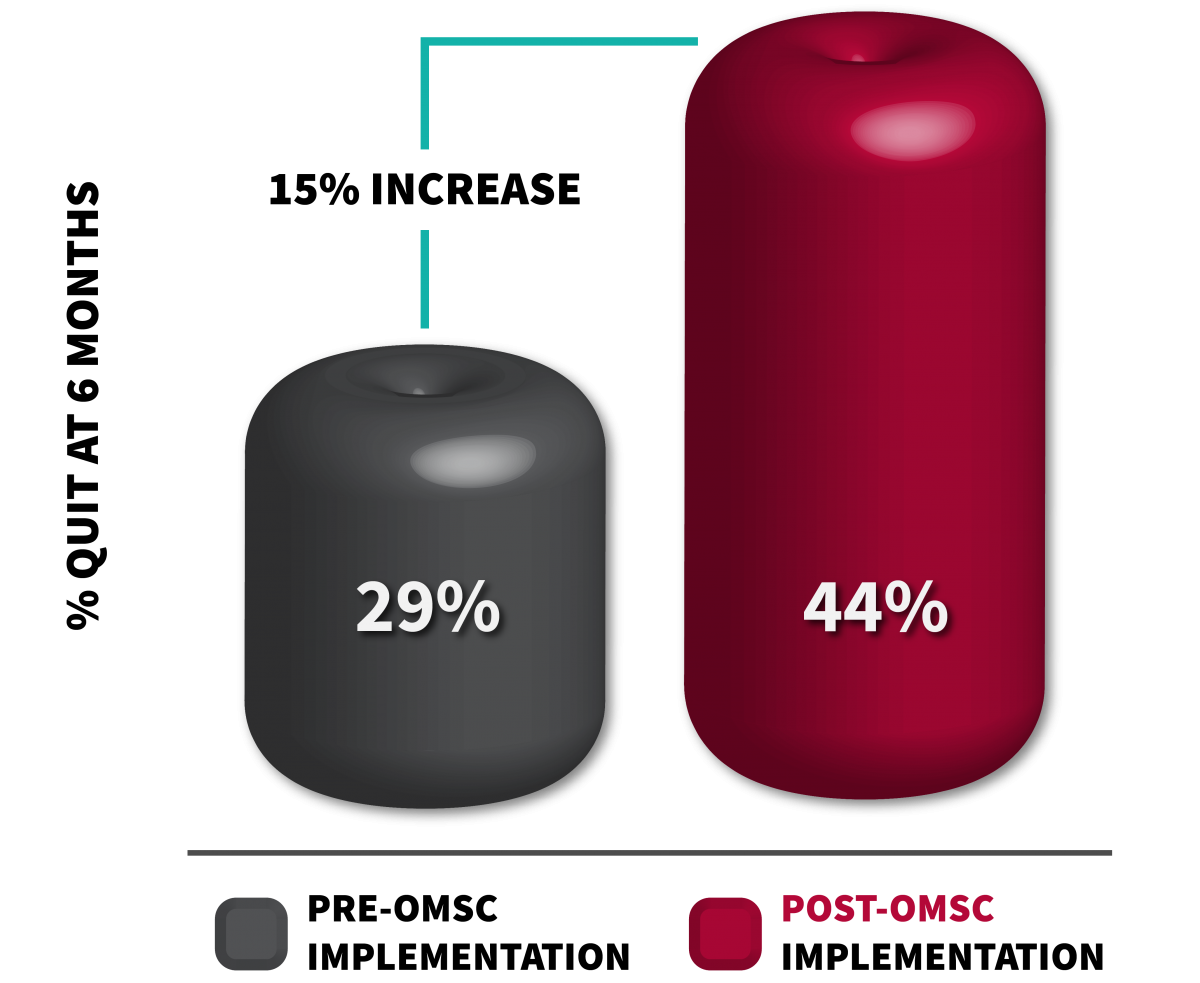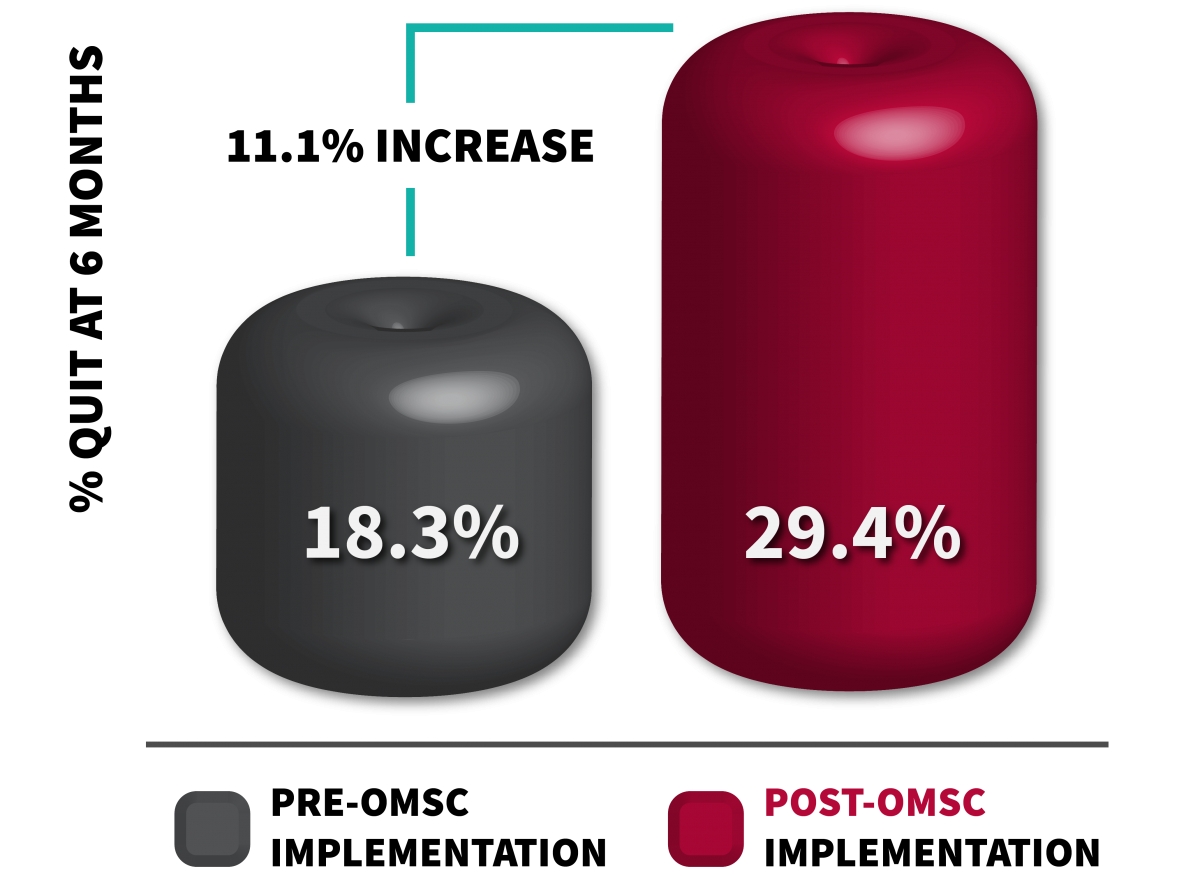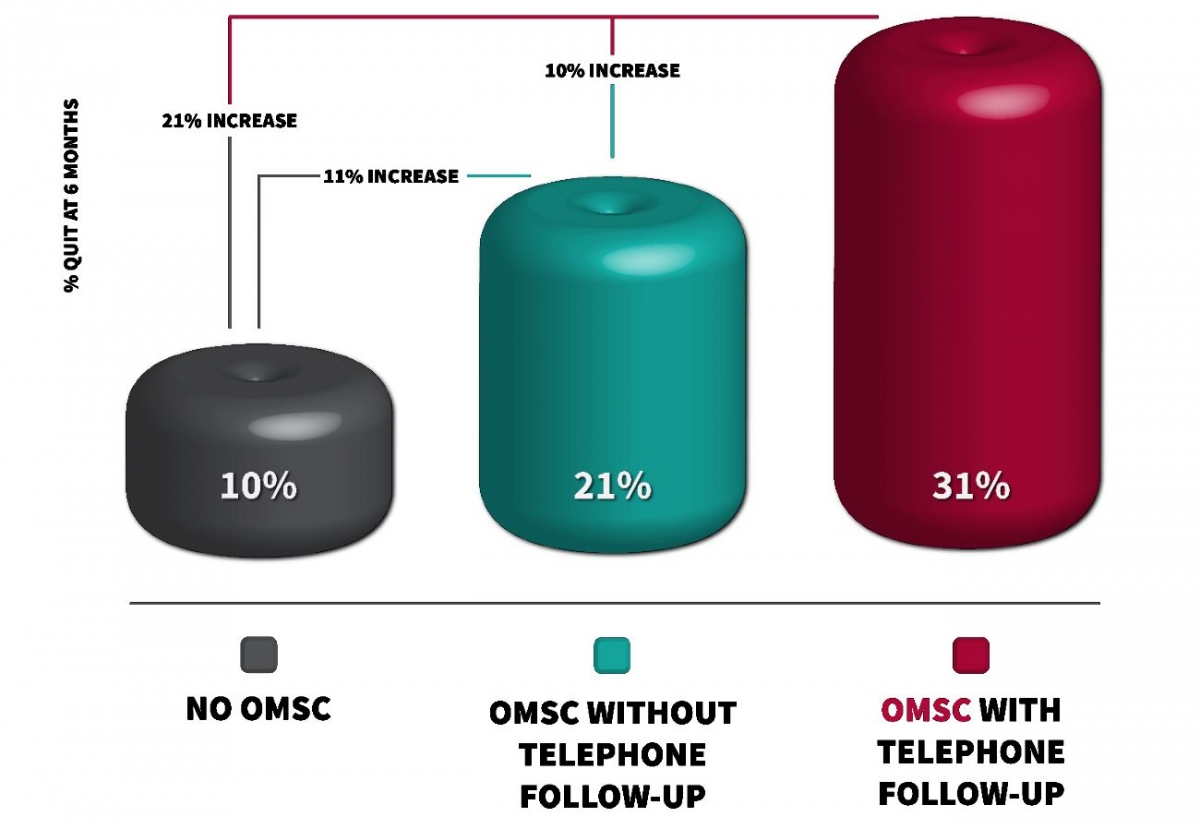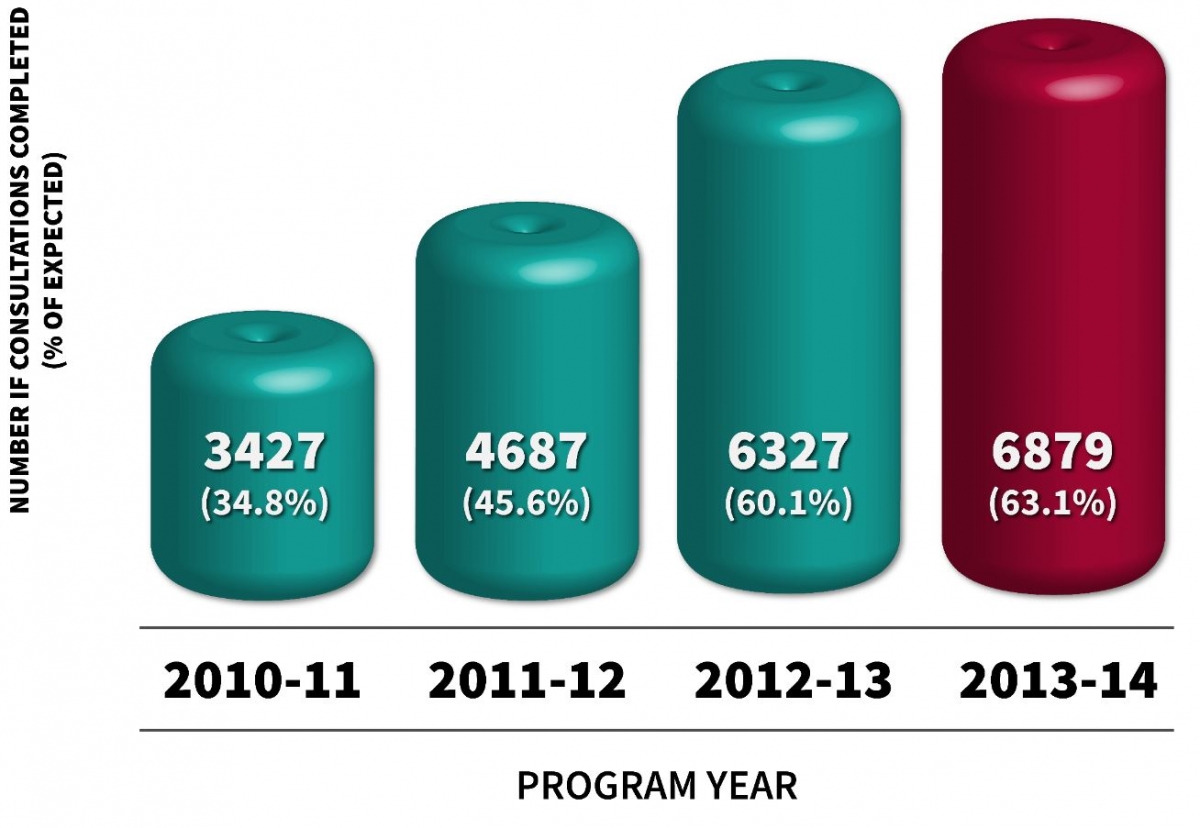The Ottawa Model for Smoking Cessation (OMSC) has been shown to change provider behaviour and is effective at increasing long-term quit rates.
University of Ottawa Heart Institute (UOHI) Inpatient Smoking Cessation Program (2002)

OMSC: Champlain Local Health Integration Network Expansion (2006)
An evaluation of the first 9 hospitals to implement the OMSC revealed an 11.1% increase (from 18.3% to 29.4%) in long-term quit rates among general patient population.

OMSC in Primary Care (2009)
In 2009, the OMSC was adapted and piloted for use in eight primary care practices in the Champlain region of Ontario. Evaluation data showed a significant increase in the rates at which healthcare providers delivered the 3As (Asked about tobacco use, Advised patients to quit, Acted by offering tobacco treatment) before and after implementation of the OMSC. A 15% increase in the number of patients who attempted to quit was documented as part of the OMSC in Primary Care Pilot Program.

Smoke-Free Patients (2013)
There was an 11% increase in abstinence rates among smokers who were ready to quit when adding an in-clinic smoking cessation intervention (OMSC with no telephone-based follow-up). However, there was a 3-fold increase in quit rates (from 10% to 31%) when the OMSC included telephone-based follow-up. These results illustrate the importance of providing follow-up to patients who smoke.

OMSC Performance Obligations Added to LHIN Hospital Accountability Agreement (2010)
In 2010, the Champlain Local Health Integration Network (LHIN) Hospital Service Accountability Agreements (HSAA) with 15 regional hospitals were amended to include a performance obligation stating that hospitals must expand their OMSC programs to reach (i.e. provide an OMSC smoking cessation consultation to) ≥ 80% of inpatient smokers each year. In 2013, 63% of expected smokers were reached by participating Champlain hospitals, compared to only 29% in 2010 – a relative improvement of more than 80%.

OMSC Evaluation (2016)
A recent study by the University of Ottawa Heart Institute (UOHI) and the Institute for Clinical Evaluative Sciences (ICES) showed that:
-
35% of patients who received the OMSC were smoke-free at 6-months, compared to only 20% of the usual care participants;
-
Patients who received the OMSC were 50% less likely to be re-admitted to the hospital for any cause, and 30% less likely to visit an emergency department within 30 days;
-
Smokers who received the OMSC were 21% less likely to be re-hospitalized and 9% less likely to visit an emergency department over 2 years;
-
Most importantly, smokers who received the OMSC had a 40% reduction in risk of death over 2 years.
Strategies like the OMSC reduce subsequent healthcare use, but most importantly, can distinctly enhance the well-being of our patients who smoke.
